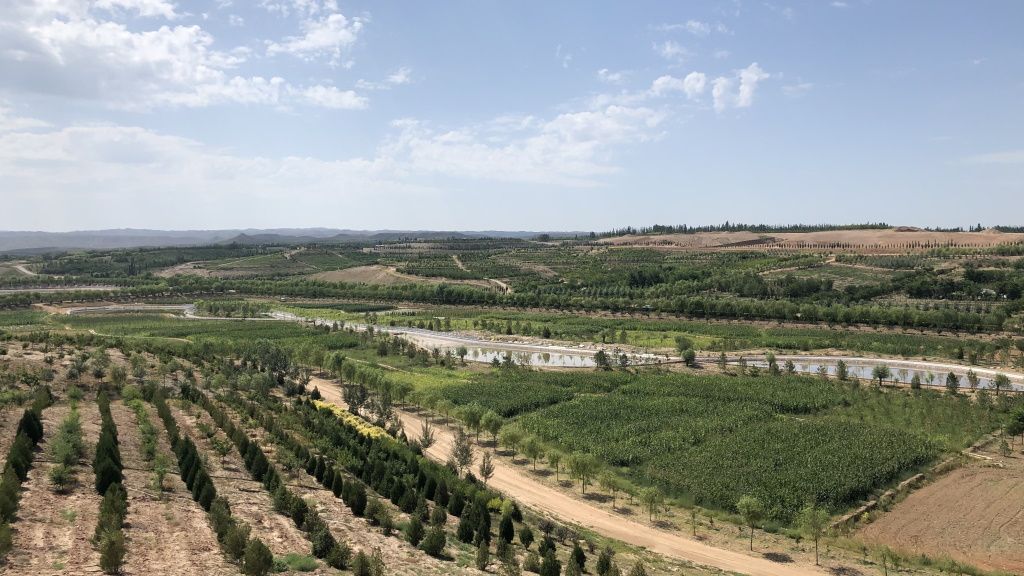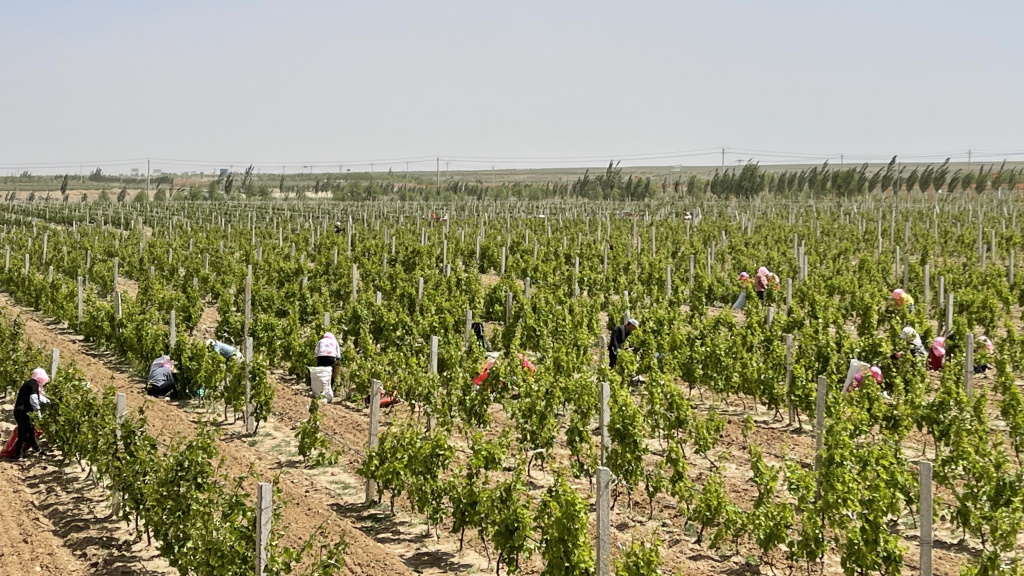Others
Irrigation Project Cultivates Jobs and Incomes in Ningxia, the PRC
Graham Dwyer 14 Jul 2022
Shortages of water, poor agricultural practices, and unsustainable farming held back progress on poverty reduction in Ningxia Hui Autonomous Region, PRC.
ADB approved the Ningxia Integrated Ecosystem and Agricultural Development Project in December 2012 to expand water-saving irrigation and strengthen the partnership of enterprises with farmer households.
The project had strong development impact in terms of achieving water conservation and boosting rural incomes from improved agriculture production, as well providing jobs, almost half of which were taken up by women, and reducing greenhouse gas emissions.
Early in the 21st century, as much of the rest of the PRC was powering toward poverty eradication, Ningxia Hui Autonomous Region (NHAR) continued to suffer persistently high incidences of poverty in rural areas. Shortages of water, poor agricultural practices, and unsustainable farming held back progress.
Recognizing this, the NHAR government from the late 1990s promoted the development of horticultural crops—mainly goji berries, grapes and Chinese dates—to boost agricultural productivity and farmers’ incomes. The Ningxia Agriculture Reclamation Group (NARG), a commercialized state-owned enterprise, pioneered the growing of grapes for wine making. The result was higher value crops and greater employment opportunities for local people.
Since 2010, the Asian Development Bank (ADB) has supported NHAR’s campaign to better manage its agriculture. ADB approved a loan of $70 million for the Ningxia Irrigated Agriculture and Water Conservation Demonstration Project in December 2012 to expand water-saving irrigation and strengthen the partnership of enterprises with farmer households.
Sustainable farming practices
The project focused on improving irrigation systems, (vineyards and agriculture farms, grape processing capacity, and institutional and farmer capacity.
“The project was designed to promote sustainable farming practices and improve the agricultural value chain,” says ADB Senior Project Officer (Environment) Niu Zhiming. “The ADB project in Ningxia demonstrated water-saving technologies and climate resilient agricultural practices in modern farms, including irrigation scheduling and fertigation, which is adding fertilizers to the irrigation pipes, optimized cropping management, and high-value crops.”
The project replaced the existing irrigation network with higher efficiency systems and introduced drip irrigation and hose irrigation in the targeted vineyards and Chinese date orchards. It also supported the construction of water storage ponds, small pumps, on-farm water distribution pipe networks, and other facilities. The project exceeded its target by increasing the total irrigated area by 2,694 hectares (ha) while saving about 3.11 million meters in water.
The project established 180 ha of vineyards, rehabilitated 823 ha with improved farming practices, and planted 225 ha of shelterbelts. It also supported associated land leveling, windbreak shelterbelts, improved farming practices (including pest management and balanced fertilizer application, and conservation tillage), and access roads in the project vineyards and orchards.
At completion, the project also built a full grape processing capacity at two farms as planned, both equipped with a quality monitoring system. The processing systems including grape crushing, pressing, and juice storage facilities were put into operation in 2018.
Strengthening institutions
The project strengthened the capacity of the executing and implementing agencies to undertake the project and provided training to farmers on water-saving irrigation and new farming technologies. It also helped to improve monitoring systems for quality control and enhance its marketing.
“Following completion in June 2020, the water-saving irrigation and new farming technologies have been applied extensively in the project area, and the farmers’ capacity to use these technologies has been significantly strengthened,” says PRC Country Director Yolanda Fernandez Lommen. “NARG has adopted a quality monitoring and control system for its vineyards and wineries, and the water users associations are extensively involved in irrigation management.”
More than 8,600 farmers were trained in water and soil conservation, sustainable horticultural management, and plant disease prevention and pesticide management. Some 340 staff were trained from cooperatives and the water users associations were trained in sustainable horticultural management. About 40% of trainees in horticultural management were women.

Achieving gender targets
More generally, the project achieved its 16 gender targets, with more than 47% of the 17,500 jobs created under the project—totaling 11,872—were taken by women. Meanwhile, 4,908 women out of 8,612 farmers participated in various trainings, including water and soil conservation, sustainable horticultural management, and plant disease prevention and pesticide management.
The total annual greenhouse gas emissions reduction from the project is estimated at 3,874 tons of carbon dioxide equivalent starting from 2020, mainly from the increase in vegetation after the planting of vineyards and orchards and the ecological shelterbelts. The percentage of land under water conservation irrigation to total irrigated land in Ningxia increased from 19% in 2010 to 49% in 2020 under the ADB Ningxia Integrated Ecosystem and Agricultural Development Project.
The average per capita rural income increased from CNY4,675 in 2010 to CNY13,889 in 2020. In addition to the increased area of water-saving irrigation, the project supported high-value agriculture such as yellowhorn and protected agriculture in Binggou and Ma’anshan, which contributed to the increase in rural income.
“The project had a strong development impact in terms of achieving water conservation and boosting rural incomes from improved agriculture production, delivering its planned outputs effectively,” says East Asia Director General M. Teresa Kho. “It achieved its intended outcomes by increasing quality and value of horticultural crops in Ningxia. The project also made positive contributions to the ADB Strategy 2030 long-term organizational priorities.”
Author

Graham Dwyer
Principal Communications Specialist, Department of Communications, ADB
This article is reproduced from Asian Development Bank.


